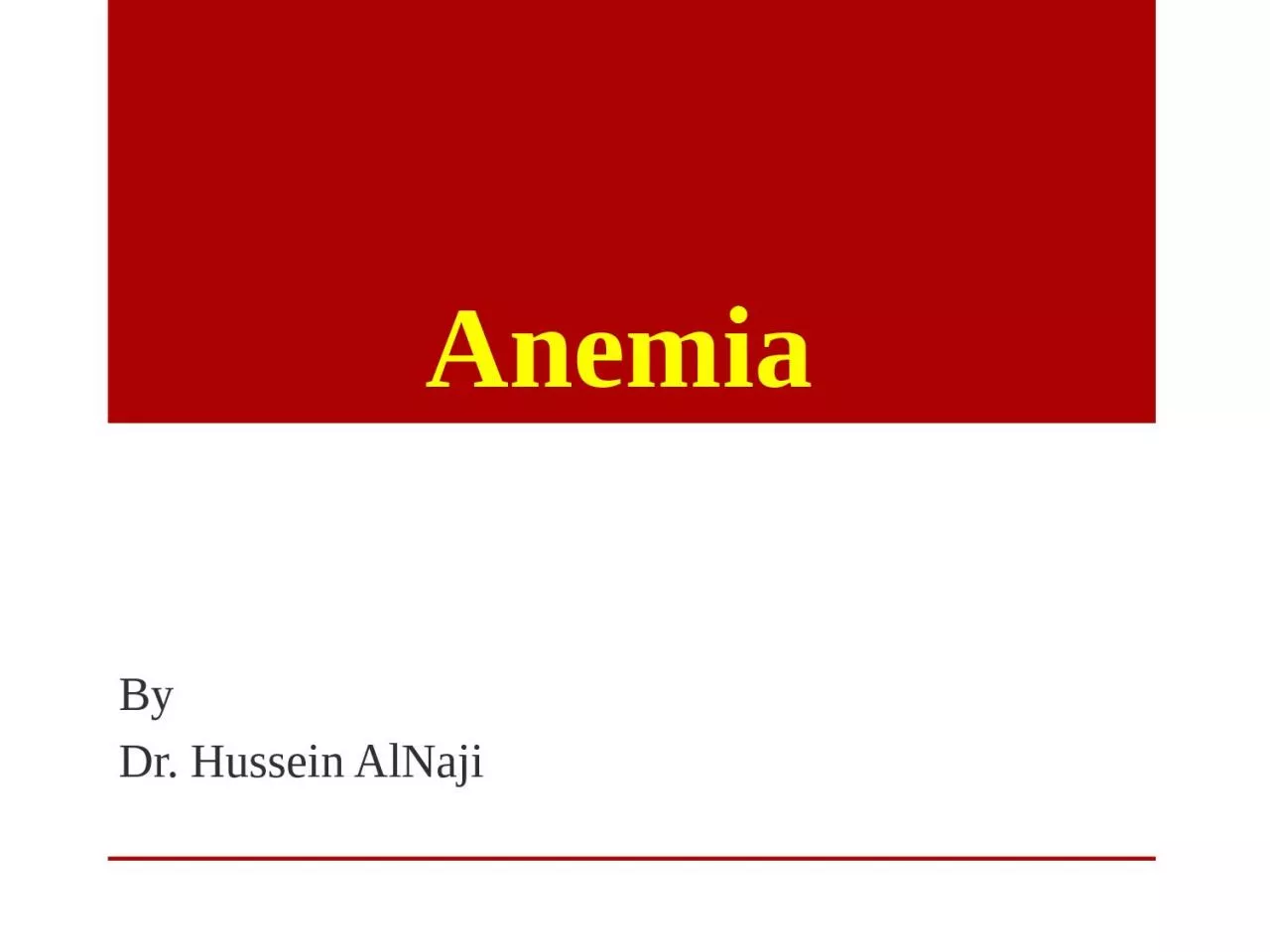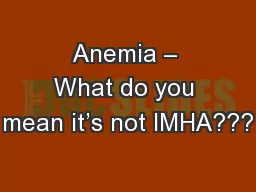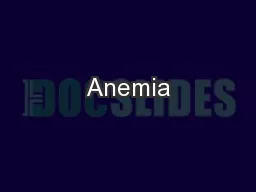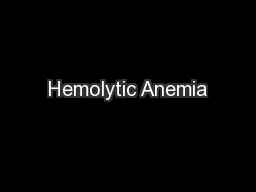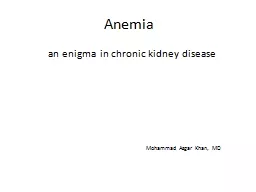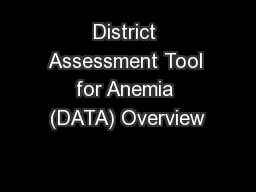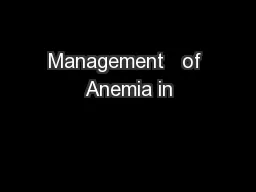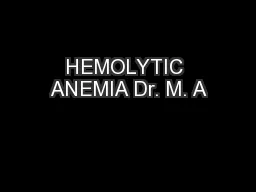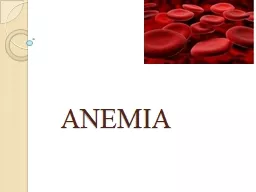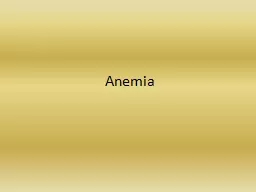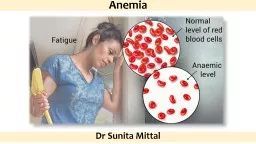PPT-Anemia By Dr. Hussein AlNaji
Author : WeirdoWonder | Published Date : 2022-08-02
Anemia True or absolute anemia is defined as a decrease in erythrocyte mass within the body HCT hemoglobin and RBC count values are usually below their reference
Presentation Embed Code
Download Presentation
Download Presentation The PPT/PDF document "Anemia By Dr. Hussein AlNaji" is the property of its rightful owner. Permission is granted to download and print the materials on this website for personal, non-commercial use only, and to display it on your personal computer provided you do not modify the materials and that you retain all copyright notices contained in the materials. By downloading content from our website, you accept the terms of this agreement.
Anemia By Dr. Hussein AlNaji: Transcript
Download Rules Of Document
"Anemia By Dr. Hussein AlNaji"The content belongs to its owner. You may download and print it for personal use, without modification, and keep all copyright notices. By downloading, you agree to these terms.
Related Documents

